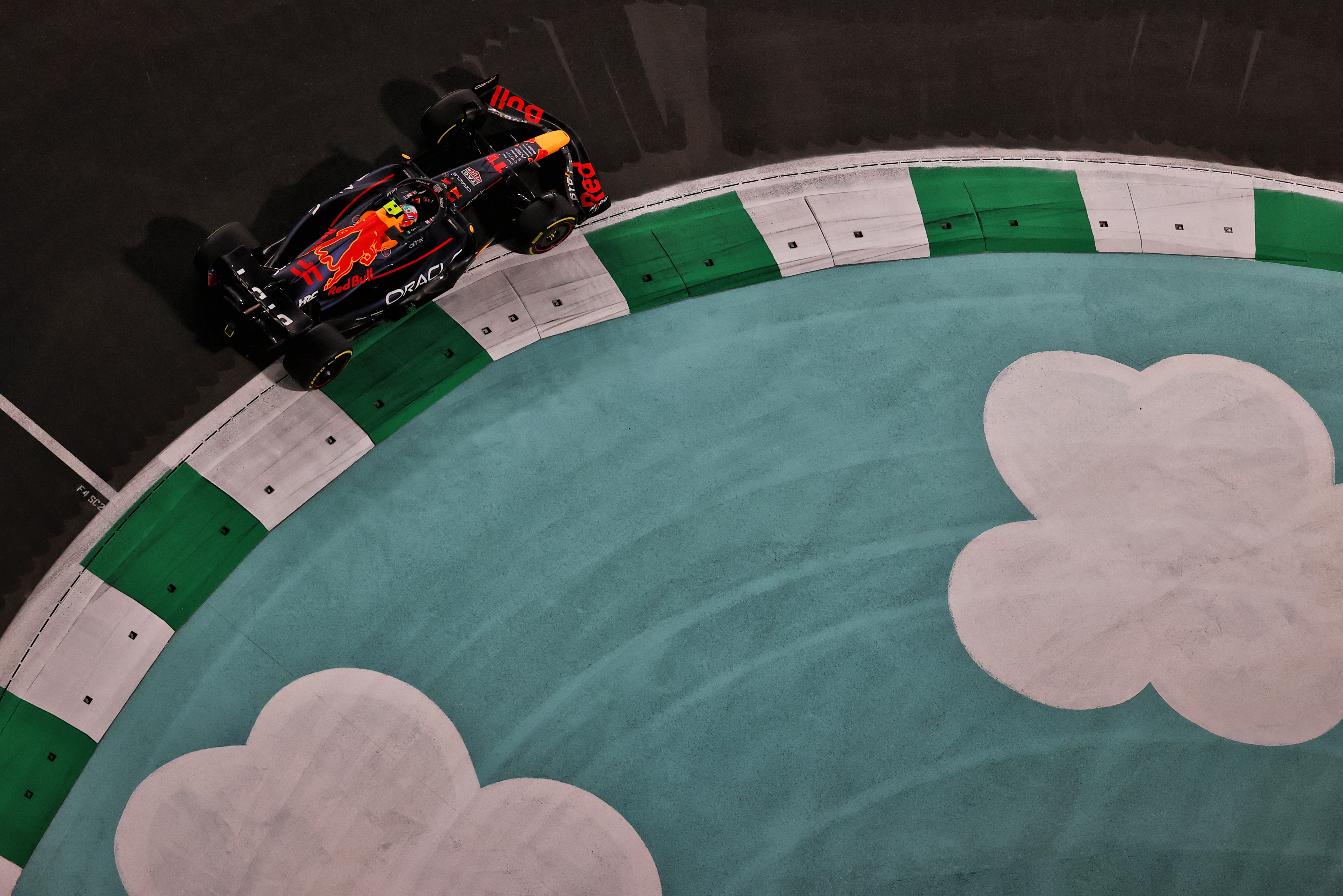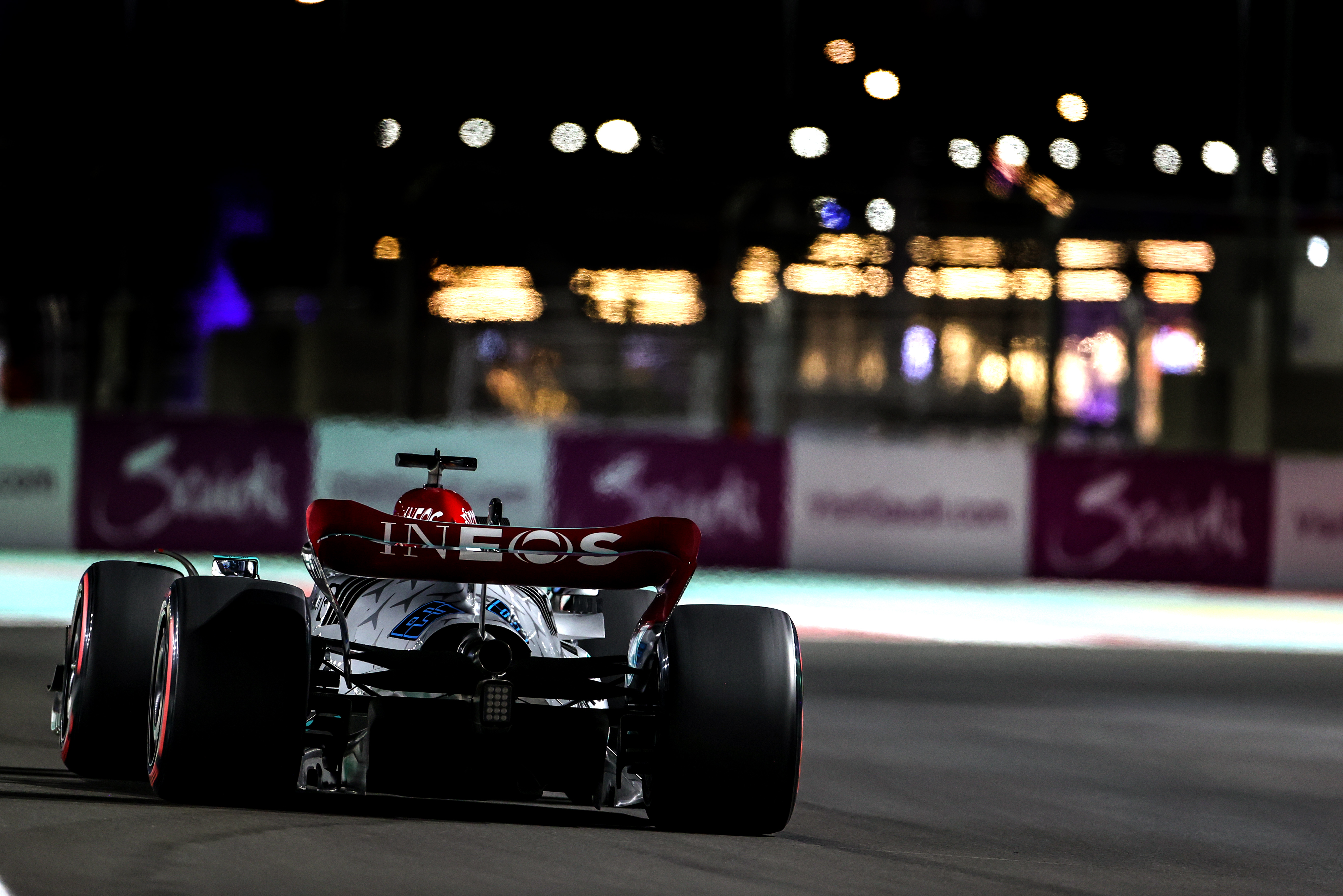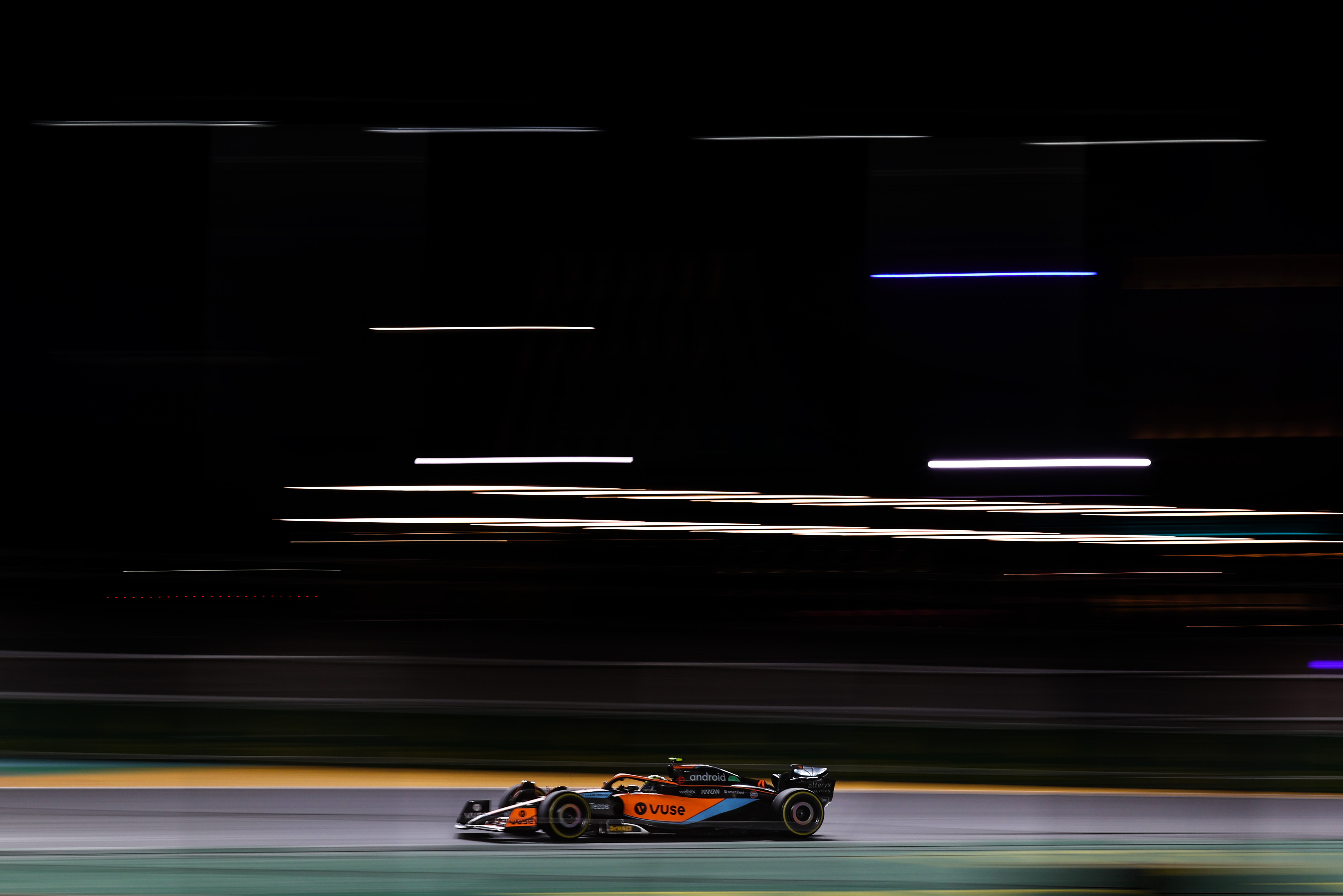Up Next

It may be nothing, but one of the ways Charles Leclerc derived his incredible qualifying speed in Bahrain last week was to establish some key limits by going over them in the preceding practice sessions, notably at Turn 11 where he spun twice, but carried a decisive advantage in qualifying.
That approach around a street track is inevitably riskier – and here in Jeddah he lost the chance of any long runs by hitting the Turn 4 wall as he was pushing on a qualifying simulation lap, breaking a front track rod.
What’s worse for Ferrari was that at much the same time Carlos Sainz – pushing hard, doing everything in his power this weekend not to fall into Leclerc’s shadow – did much the same, at Turn 13. So Ferrari goes into Saturday with no long-running data.
The good news for the team is that on a single lap, its car still looks to have the edge over the rest.
We are not quite comparing like-with-like here, though, because second-fastest Red Bull’s Max Verstappen did his time on the medium. He aborted his soft-tyre lap near the end after suffering a bit of a moment – possibly as a result of a sudden wind gust. But even up until that point, he was still trailing Leclerc by a couple of tenths. Sergio Perez didn’t complete a fast lap on the soft either.

With everyone on low-downforce rear wings, the Mercedes deficit to the front looks not quite as bad as in Bahrain. After settling on both cars for the lowest of the rear wing options it brought, the team spent the two sessions finding the optimum trade-off between porpoising and laptime.
Theoretically the aero numbers say one thing, but the drivers something else. The biggest time loss of Lewis Hamilton and George Russell to the front is through the fast, interlinked Turns 5/6/7/8/9 where the porpoising is not giving them confidence the car can be pushed hard. Otherwise, on straightline running they are much the same as Red Bull.

“We tried a few more experiments to understand the bouncing issue here,” explained Mercedes’ trackside engineering chief Andrew Shovlin, “some which made it worse, some which helped, but we don’t yet have a solution to make the problem go away.
“We can reduce this slightly for tomorrow as it’s affecting the drivers in a few of the corners and costing time. Compared to Bahrain, the car balance is in a better place and in terms of degradation we’re quite happy with what we have seen today.”
McLaren too is much improved since Bahrain and for much the same reason – the low drag demands of the circuit mean its downforce deficit is not so badly punished. Lando Norris’ seventh-fastest time gave the team some encouragement.
Daniel Ricciardo is not as far off as the headline times make it appear. He didn’t do a low-fuel lap on the soft tyre and when he was on the medium was on the same tenth as Norris.
Practice 2 Results
| Pos | Name | Car | Best Time | Gap Leader |
|---|---|---|---|---|
| 1 | Charles Leclerc | Ferrari | 1m30.074s | |
| 2 | Max Verstappen | Red Bull | 1m30.214s | +0.14s |
| 3 | Carlos Sainz | Ferrari | 1m30.32s | +0.246s |
| 4 | Sergio Pérez | Red Bull | 1m30.36s | +0.286s |
| 5 | Lewis Hamilton | Mercedes | 1m30.513s | +0.439s |
| 6 | George Russell | Mercedes | 1m30.664s | +0.59s |
| 7 | Lando Norris | McLaren-Mercedes | 1m30.735s | +0.661s |
| 8 | Esteban Ocon | Alpine-Renault | 1m30.76s | +0.686s |
| 9 | Valtteri Bottas | Alfa Romeo-Ferrari | 1m30.832s | +0.758s |
| 10 | Yuki Tsunoda | AlphaTauri-Red Bull | 1m30.886s | +0.812s |
| 11 | Fernando Alonso | Alpine-Renault | 1m30.944s | +0.87s |
| 12 | Pierre Gasly | AlphaTauri-Red Bull | 1m30.963s | +0.889s |
| 13 | Mick Schumacher | Haas-Ferrari | 1m31.169s | +1.095s |
| 14 | Lance Stroll | Aston Martin-Mercedes | 1m31.372s | +1.298s |
| 15 | Daniel Ricciardo | McLaren-Mercedes | 1m31.527s | +1.453s |
| 16 | Nico Hülkenberg | Aston Martin-Mercedes | 1m31.615s | +1.541s |
| 17 | Guanyu Zhou | Alfa Romeo-Ferrari | 1m31.615s | +1.541s |
| 18 | Nicholas Latifi | Williams-Mercedes | 1m31.814s | +1.74s |
| 19 | Alex Albon | Williams-Mercedes | 1m31.866s | +1.792s |
| 20 | Kevin Magnussen | Haas-Ferrari | 1m32.344s | +2.27s |
In terms of the long runs, it would appear that the hard is the best race tyre. It is faster than the medium after about six laps and gives a significantly better stint average. (Alex Albon used it to set a faster long run average in the Williams than George Russell’s medium-tyred Mercedes.)
Front tearing/graining is the main tyre limitation and this seems set to make the race a two-stopper at minimum, with three-stopping actually on the radar. Anyone starting on the shorter-duration soft for the startline and early lap performance might be verging towards a three-stop.
LONG RUNS
| Driver | Medium average | Hard average |
| Verstappen |
1m35.197s (11 laps)
|
|
| Perez |
1m35.352s (10 laps)
|
|
| Hamilton |
1m35.874s (13 laps)
|
|
| Alonso |
1m35.946s (11 laps)
|
|
| Albon |
1m36.098s (10 laps)
|
|
| Russell |
1m36.112s (17 laps)
|
|
| Ocon |
1m36.17s (10 laps)
|
|
| Gasly |
1m36.276s (8 laps)
|
|
| Norris |
1m36.432s (11 laps)
|
|
| Latifi |
1m36.863s (12 laps)
|
|
| Schumacher |
1m37.35s (5 laps)
|
|
| Stroll |
1m38.37s (11 laps)
|
Valtteri Bottas didn’t get out for his long runs. Kevin Magnussen stopped out on track in FP2 after grounding to a halt with no laps on board on FP1, so we don’t have a great reading on the Alfa Romeo or the Haas.

But the longer the Mercedes ran, the further away they drifted from the Red Bull pace. Similarly the McLaren, despite its encouraging single-lap pace, looked less convincing than Alpine in race trim, with AlphaTauri somewhere in between. Aston Martin is once again struggling.
Assuming no further interruptions from the outside world, the biggest question is whether the Ferrari drivers’ incidents will end up punishing the team sufficiently for Red Bull to take advantage.





